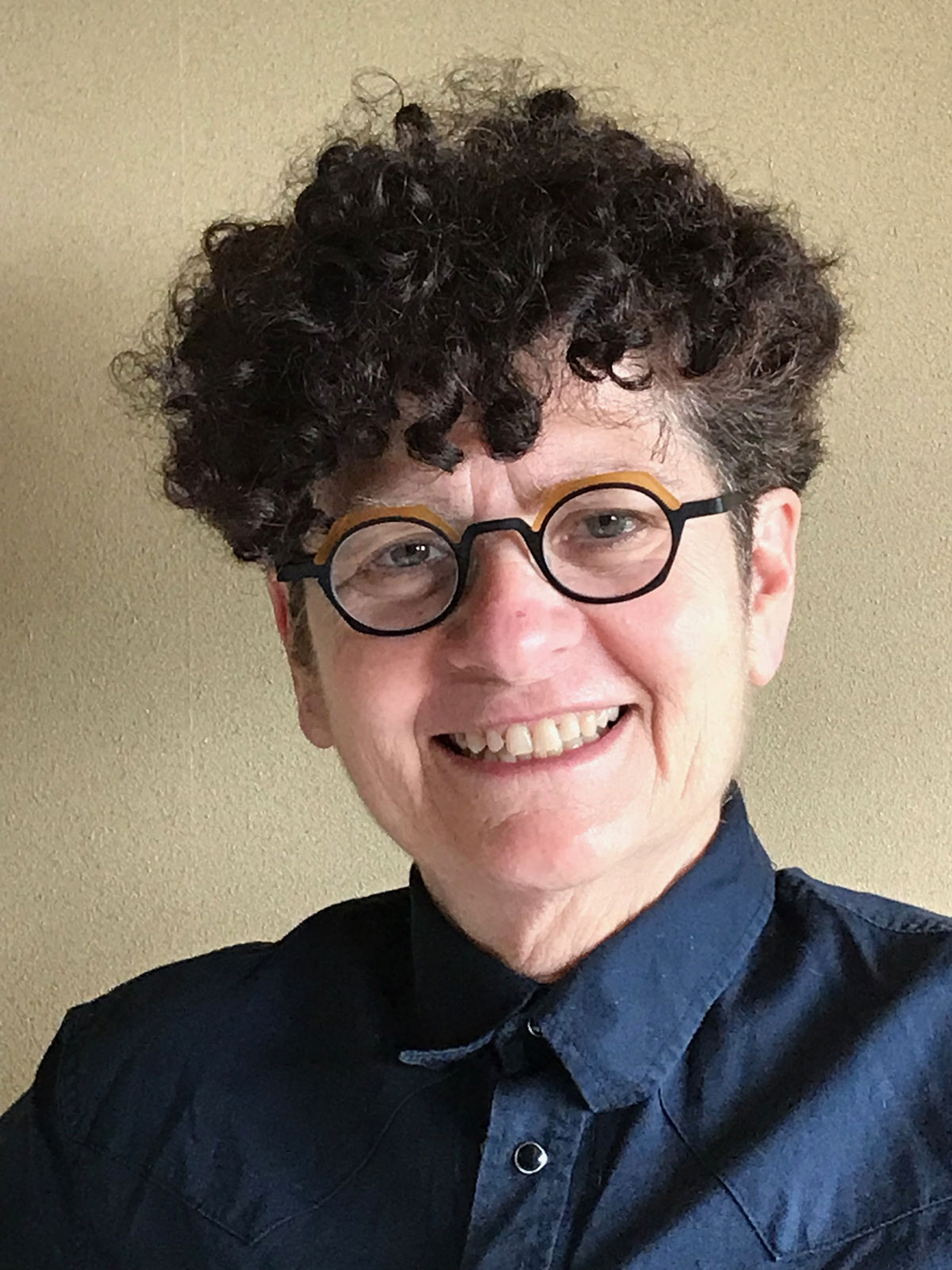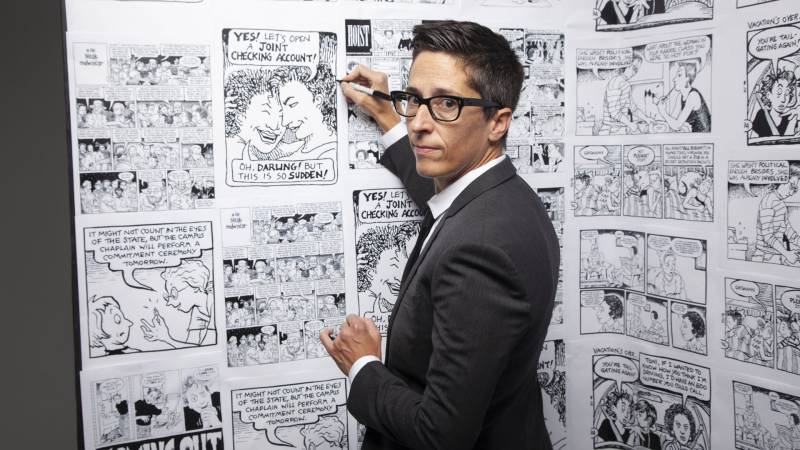In addition, No Straight Lines is a social history. Cruse, then a Madison Avenue graphic designer, was on Christopher Street in 1969 when the Stonewall Inn’s clientele got fed up with police harassment. He later recounted his experience in comic book form. In the ’70s, Kinnard wrote a popular weekly strip featuring a Black hero for his Iowa college newspaper — and revealed the character was gay.
Along the way, we get a tour of counterculture and DIY publishing from underground comics to alternative weeklies, on to ’zines and graphic novels (notably Cruse’s award-winning Stuck Rubber Baby and Bechdel’s best-selling Fun Home). All economics is personal: Self-expression was the artists’ primary driver, but making a living was important, too.
Several elements elevate No Straight Lines above the typical historical doc. The five artists don’t recount familiar (to them) anecdotes but vividly re-experience their pivotal moments — how it felt to create and draw queer experiences and encounters, or discover them for the first time. First-person testimony from good storytellers can’t be topped, least of all by dry analysis.
“I had a lot of pressure to include academics,” Kleiman recalls, “who would tell us what the meaning was behind all the stories we were hearing. And I knew from the absolute get-go there would not be one academic or expert in the field. People don’t need outsiders to explain themselves.”
But Kleiman came to recognize that another group of voices was necessary: Younger cartoonists.
“When I had the first or second rough cut, I took a look at it, sat back and thought: Interesting narrative, well-edited. But I wouldn’t watch it a second time. What’s missing? A sense of vitality and gutsiness and rawness, which is what the comics were about and what the artists themselves were about.”
Kleiman’s five subjects, now in their 70s, 60s and 50s, didn’t have the edge, the hunger, something to prove like they’d had in their 20s. So when the international Queers & Comics Conference was held in the Bay Area, the filmmaker tried a low-cost experiment. She hired a crew and set up a camera, and conducted 10-minute interviews with a parade of next-generation comic book artists.
“I didn’t know their names, I didn’t know their artwork, I didn’t know anything, and we just started to talk,” Kleiman says. “They didn’t know a lot of the pioneers’ work. I had expected an attitude that I had at their age, which was ‘the old people don’t know nothing. We don’t need them. They have no meaning to us.’ Instead, each and every one was grateful and acknowledged how they were the beneficiaries of the work the others had done and the challenges they had faced and overcome.”
Their presence in No Straight Lines provides more than youthful energy. They lift the film out of the realm of history and into the perennial present. Self-acceptance, self-expression, coming out — themes that queer comic book artists explored from the beginning — are both universal and timeless, regardless of gender identity, sexual orientation or physical appearance.
The prevailing direction of No Straight Lines, as with many docs about the queer experience in America, is that things have gotten better. In particular, Alison Bechdel’s unlikely career path to mainstream acceptance marks a breakthrough for lesbians. Close to throwing in the towel after her alternative newspaper outlets folded, she published an unexpectedly popular graphic novel that, even more improbably, birthed an acclaimed Broadway musical.




